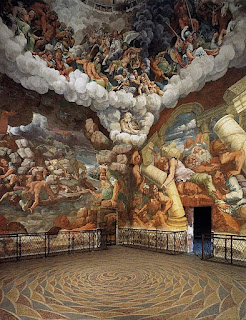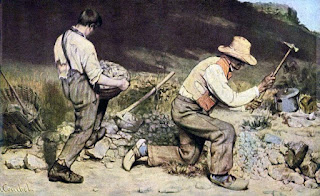Renaissance Blog
Overview
The 15th century Italian Renaissance art is characterized specifically by the rebirth of literature, art, as well as philosophy. The most common literature inspired art around this century was Ovid’s Metamorphoses, which is a poem consisting of 15 books that was written in latin 8 C.E. about different mythological stories and many Greek legends about the creation of the universe and death. Many artists from the 15th to the 17th century used this literature to spark creativity through their art and to tell a story. One of my favorite masterpieces from the 15th century Italian renaissance is the “Fall of the Giants” created by Giulio Romano from 1532-1534. This is one beautiful architectural fresco piece created in the City of Mantua, Italy in the Palazzo del Tè where the walls and ceiling are hand painted to look like a mythological apocalyptic catastrophe.
The Reformation and Reinvention Era
The Reinvention of Rome and the Catholic Church as well as the Reformation had an effect on Italian Renaissance art because, during this time period people were dissatisfied with the practices of the Catholic Church as well as the pope's interference with certain political matters, humanist ideas, and etc. it was becoming very corrupt. Since most pieces of art prior to the Reformation were centered around Catholic values, there was a shift that focused on the corruption of religion. For example, you could use the piece that I talked about above, the “Fall of the Giants”, by Romano. Romano’s architectural piece was centered around Ovid’s Metamorphoses which is about how “humans worship the gods more out of fear than love”, he portrays this in his mural by depicting collapsed ancient buildings, dark clouds with strong winds, panic, and the sight of horror on giants faces(gods). You can relate this mural to what was currently happening during this time in the 15th century with the Reformation and dividing the Catholic Church.
The Influence of this Piece
I really enjoyed reviewing this piece of art, I loved how it was an architectural design rather than it being placed on a painting because he really used his landscape to his advantage. By placing the gods in the clouds above on the ceiling, while the people down on earth were on the walls it depicted more of a story and a tragedy because to me it looks like since the gods are fighting that means that people are fighting, all around chaos. I personally don't know if I would keep this in my home since it’s not necessarily my aesthetic but I do appreciate a good piece of art and I would say that this is one masterpiece.
“Fall of the Giants (Romano).” DBpedia, https://dbpedia.org/page/Fall_of_the_Giants_(Romano).
“Ovid in Renaissance Thought.” Obo, https://www.oxfordbibliographies.com/display/document/obo-9780195399301/obo-9780195399301-0500.xml.
Shmoop Editorial Team. “The Metamorphoses Religion.” Shmoop, Shmoop University, 11 Nov. 2008, https://www.shmoop.com/study-guides/literature/metamorphoses/themes/religion.
Smith-Laing, Tim. “Ovid Metamorphoses Artistic Influence.” Apollo Magazine, 25 Apr. 2017, https://www.apollo-magazine.com/ovids-metamorphoses-is-the-ultimate-sourcebook-for-artists/.



What an amazing work of art! I love that Romano was able to incorporate so many different elements into a single cohesive piece. It is so impressive how artists of this time were able to create multiple scenes that fit together in a wonderful way. It is very interesting to look at what kind of role the Reformation and the Reinvention Era had on works of art like this one. I appreciate you explaining the shift in Italian Renaissance art and how that shift is found within Fall of the Giants. It really goes to show that art holds a lot of meaning and can truly bring to life various issues across historical eras.
ReplyDeleteI also really like exploring fresco paintings. I had also chosen a fresco painting to explore in my blog post titled Tribute Money by Masaccio which is found in the Brancacci Chapel in Florence, Italy. There is something so amazing about seeing an expansive piece of art laid out on multiple walls and the ceiling. It really adds to the overall piece and offers many additional perspectives to view the work from. I thoroughly enjoyed this piece of art and your discussion!
Hello ! I like the color representing emotion that comes from this art work the clouds look like a different world connecting. You connect the image with the the Reinvention of Rome and the Catholic Church is very good. Giulio Romano is known for his "roman school" art work. Thank you for sharing!
ReplyDeleteThis is a beautiful work of art! I love how Romano was able to use the wall and the ceiling to make the clouds look like they are real. He was really able to make all of the different aspects of this artwork work together perfectly. I also really like how you mentioned that the mural relates to the division of the Catholic Church because of the Reformation. I don't know if I would have put that together if you didn't point it out. Thank you for sharing this beautiful artwork!
ReplyDelete